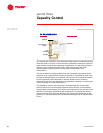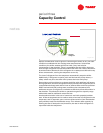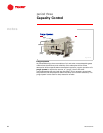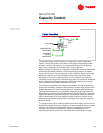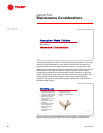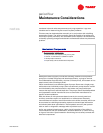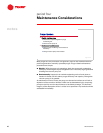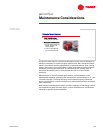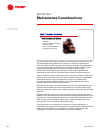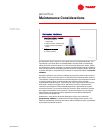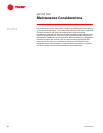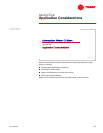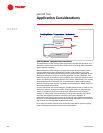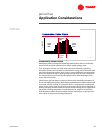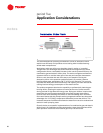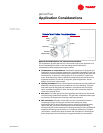
50 TRG-TRC011-EN
notes
period four
Maintenance Considerations
The use of better heat-transfer materials will reduce future maintenance costs.
The high-temperature generator, for example, contains high-temperature
lithium bromide solution that, when exposed to air and other noncondensables,
is more corrosive than in other sections of the chiller. Better materials in the
high-temperature generator will improve reliability and require less
maintenance. When selecting an absorption chiller, both installation and
maintenance costs must be considered when comparing different designs.
To ensure optimum heat transfer performance, the heat transfer surfaces must
be kept free of scale and sludge. Even a thin deposit of scale can substantially
reduce heat transfer capacity. Engage the services of a qualified water
treatment specialist to determine the level of water treatment required to
remove contaminants from the cooling water.
Scale deposits are best removed by chemical means. During this process, the
absorber and condenser are commonly isolated from the rest of the cooling-
tower-water circuit by valves, while a pump circulates cleaning solution through
the tubes.
Sludge is removed mechanically. This typically involves removing the water
boxes from the absorber and condenser, and loosening the deposits with a stiff-
bristled brush. The loosened material is then flushed from the tubes with clear
water. As part of this procedure, the strainers in both the chilled-water and
cooling-water circuits should be cleaned every year.
Every three years (more frequently in process or critical applications), a
qualified service organization should perform nondestructive inspections of the
tubes inside the generator(s), condenser, evaporator, absorber, and heat
exchanger(s). The eddy-current tube test is a common method.
▲
◆ Use a qualified water treatment
specialist
◆ Clean absorber and condenser
tubes as needed
◆ Clean waterside strainers
◆ Test tubes every 3 years
Figure 59



